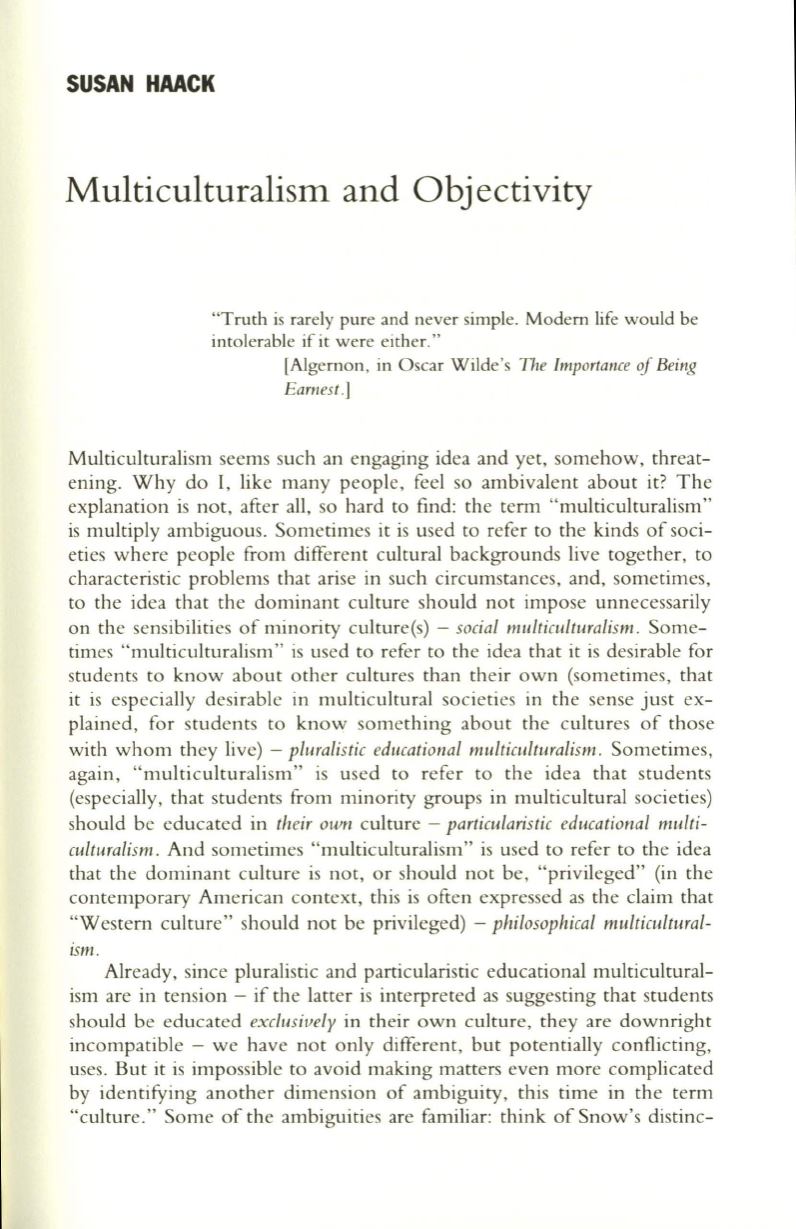
SUSAN HAACK
Multiculturalism and Obj ectivity
"Truth is rarely pure and never simple. Modern life would be
intolerable if it were either."
[Algernon, in Oscar Wilde's
The Importance of Being
Eamest.]
Multiculturalism seems such an engaging idea and yet, somehow, threat–
ening. Why do I, like many people, feel so ambivalent about it? The
explanation is not, after all, so hard to find: the term "multiculturalism"
is multiply ambiguous. Sometimes it is used to refer to the kinds of soci–
eties where people from different cultural backgrounds live together, to
characteristic problems that arise in such circumstances, and, sometimes,
to the idea that the dominant culture should not impose unnecessarily
on the sensibilities of minority culture(s) -
social multiculturalism.
Some–
times "multiculturalism" is used to refer to the idea that it is desirable for
students to know about other cultures than their own (sometimes, that
it is especially desirable in multicultural societies in the sense just ex–
plained, for students to know something about the cultures of those
with whom they live) -
pluralistic educational multiculturalism.
Sometimes,
again, "multiculturalism" is used to refer to the idea that students
(especially, that students from minority groups in multicultural societies)
should be educated in
their own
culture -
particularistic educational multi–
culturalism.
And sometimes "multiculturalism" is used to refer to the idea
that the dominant culture is not, or should not be, "privileged" (in the
contemporary American context, this is often expressed as the claim that
"Western culture" should not be privileged) -
philosophical multicultural–
Ism.
Already, since pluralistic and particularistic educational multicultural–
ism are in tension - if the latter is interpreted as suggesting that students
should be educated
exclusively
in their own culture, they are downright
incompatible - we have not only different, but potentially conflicting,
uses. But it is impossible
to
avoid making matters even more complicated
by identifying another dimension of ambiguity, this time in the term
"culture." Some of the ambiguities are familiar: think of Snow's distinc-


